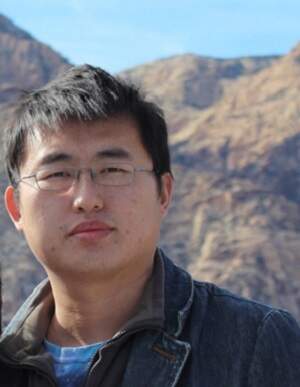
Yang Yu(Guest), Ph.D, Prof.
-
Principal Investigator
Chinese Academy of Sciences Key Laboratory of Nucleic Acid Biology, IBP
Research Interests: Mechanism and biological roles of non-coding RNAs
Email: yuyang@ibp.ac.cn
Tel: 010-64881041
Address: 15 Datun Road, Chaoyang District, Beijing, 100101, China
Chinese personal homepage
- Biography
1998 - 2002 B.S., Wuhan University, China
2002 - 2007 PhD, Timothy Nilsen Lab, Case Western Reserve University, US
2007 - 2010 Postdoc, Timothy Nilsen Lab, Case Western Reserve University, US
2010 - 2016 Postdoc, Gregory Hannon Lab, Cold Spring Harbor Laboratory, US
2016 - Professor, Institute of Biophysics, Chinese Academy of Sciences
- Awards
- Membership in Academies & Societies
- Research Interests
Transposons comprise nearly half of the human genome. Transposon control is extremely challenging because the host must distinguish diverse elements from protein coding genes and selectively silence the former. Mutations in the piRNA pathway often result in dramatic transposon overexpression and consequently render the organism completely sterile. Work from the past has provided a basic model for germline protection by the piRNA system; however, we are only just beginning to understand many of the molecular events that comprise this RNA-guided “innate immune” system. Moreover, we have not yet grasped the full range of biological functions of small RNAs. For example, what is the function of maternally deposited piRNAs during early development? What role do pachytene piRNAs play in different phases of mouse spermatogenesis? We have very few clues as to how the mysterious piRNA pathway participates in those important events. The piRNA pathway sits at the intersection of epigenetics, developmental biology and small RNA biology. The long-term goal of the lab is to understand roles of RNA in epigenetic memory and explore its potential as therapeutic targets. Currently, we are trying to understand both the biological roles and mechanism of action of piRNAs during early development and gametogenesis.
- Grants
- Selected Publications
1. Zhao K.*, Cheng S.*, Miao N.*, Xu P.*, Lu X.*, Zhang Y.*, Wang M., Zhang Y., Yuan X., Liu W., Lu X., Ouyang X., Zhou P., Gu J., Zhang Y., Qiu D., Jin Z., Su C., Peng C. Wang J., Dong M., Wan Y., Ma J., Cheng H., Huang Y.#, Yu Y.# (2019) A Pandas complex adapted for piRNA-guided transposon silencing and heterochromatin formation. Nature Cell Biology, 21(10):1261-1272. bioRxiv608273.
2. Gu J., Wang M., Yang Y., Qiu D., Zhang Y., Ma J.#, Zhou Y.#, Hannon G.#, Yu Y.# (2018) GoldCLIP: Gel-omitted Ligation-dependent CLIP. GPB, 16 (2): 136-143.
3. Yu Y., Gu J., Jin Y., Luo Y., Preall J., Ma J., Czech B. and Hannon G.J. (2015) Panoramix enforces piRNA-dependent co-transcriptional silencing. Science, 350 (6258): 339-342.
4. Vagin, V.*, Yu Y.*,Jankowska A.*, Luo Y., Malone C.D., Harrison E., Rosebrock A., Wakimoto B.T., FagegaltierD., Muerdter F. and Hannon G.J. (2013) Minotaur is critical for primary piRNA biogenesis. RNA, 19(8): 1064-77.
5. Yu Y., Maroney P.A., Denker J.A., Zhang X.H., Dybkov O., Luhrmann R., Jankowsky E., Chasin L.A. and Nilsen T.W. (2008). Dynamic regulation of alternative splicing by silencers that modulate 5' splice site competition. Cell, 135(7): 1224-36.
Book Chapters
Yu Y. and Nilsen T.W. (2009). Mechanisms by which microRNAs regulate gene expression in animal cells.In Regulation of Gene Expression by Small RNAs. Gaur R.K. and Rossi J.J. Eds. CRC Press.
Other Publications
1. Muerdter F., Guzzardo P.M., Gillis J., Luo Y., Yu Y., Chen C., Fekete R. and Hannon G.J. (2013) A genome-wide RNAi screen draws a genetic framework for transposon control and primary piRNA biogenesis in Drosophila. Mol Cell, 50(5): 736-748.
2. Maroney P.A., Yu Y., Fisher J. and Nilsen T.W. (2006). Evidence that microRNAs are associated with translating messenger RNAs in human cells. NSMB, 13(12):1102-7.
(From Yang Yu, March 6, 2020)

